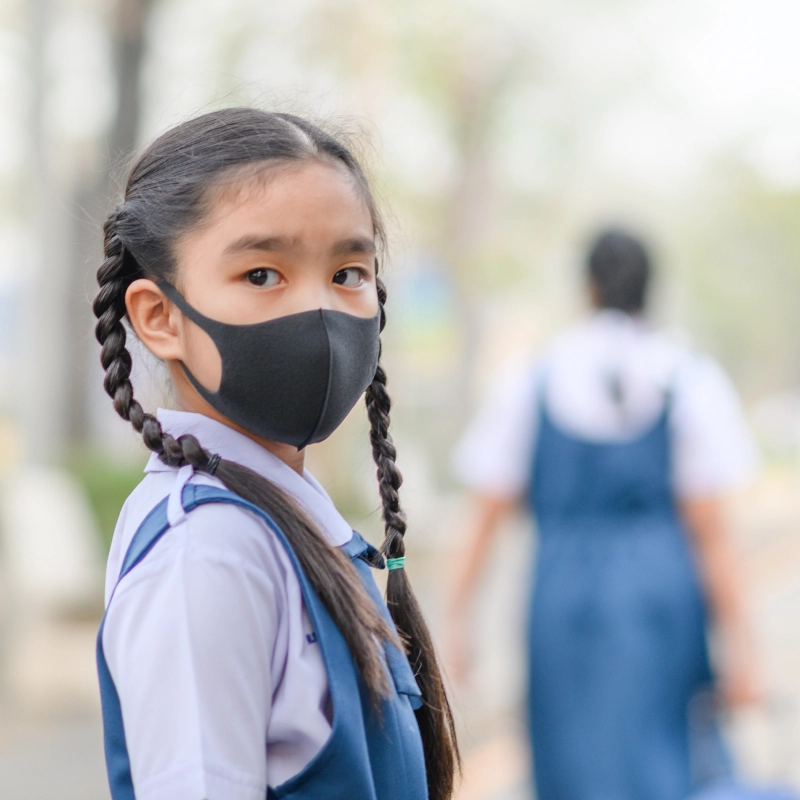Home/Wellness Zone/Sakra Blogs
28th Nov, 2023

The school contains a complicated micro-environment of allergens, pollutants, and infections. A school is a place where children are required to interact with the outside environment, and exposure levels in this setting can have a substantial health impact.
During the week, children spend the majority of their time at school. If children come back with symptoms suggestive of allergen exposure, they may have more symptoms in school days compared to weekends or during school holidays.
Respiratory Allergy: Respiratory conditions that can be caused by allergies are not uncommon in children. This can be in the form of recurrent coughs and wheezing (Asthma), runny nose, itchy eyes, and blocked nose. If children have these symptoms repeatedly, it is necessary to look into allergens in the home or school environment, eliminating or reducing exposure to them may greatly help. Allergy and asthma in children are on the rise and one of the reasons is environmental exposure to allergens and air pollution. In a small minority of children, these problems can be quite severe and can lead to long-term issues, especially if not identified and treated appropriately.
Families with children with wheezing and asthma should provide a written plan from their pediatrician for the school to handle emergencies. Spare inhalers, spacers, and medications should be regularly sent with the child or held with the school nurse.
Eye Allergy: Watering and redness of the eyes, itchy eyes, and the need to rub the eye frequently can be eye allergies. This often goes along with nasal allergy symptoms. Common triggers are environmental allergens like pollen.
Food Allergies: True food allergies are rare. However, if a parent has reported that the child is allergic to certain foods, care should be taken by schools to ensure that there is no exposure. Schools should have a written plan of what to do in case of an allergic reaction in such children provided by the child’s pediatrician. These medications should be stored in the school infirmary.
Enquire Now
